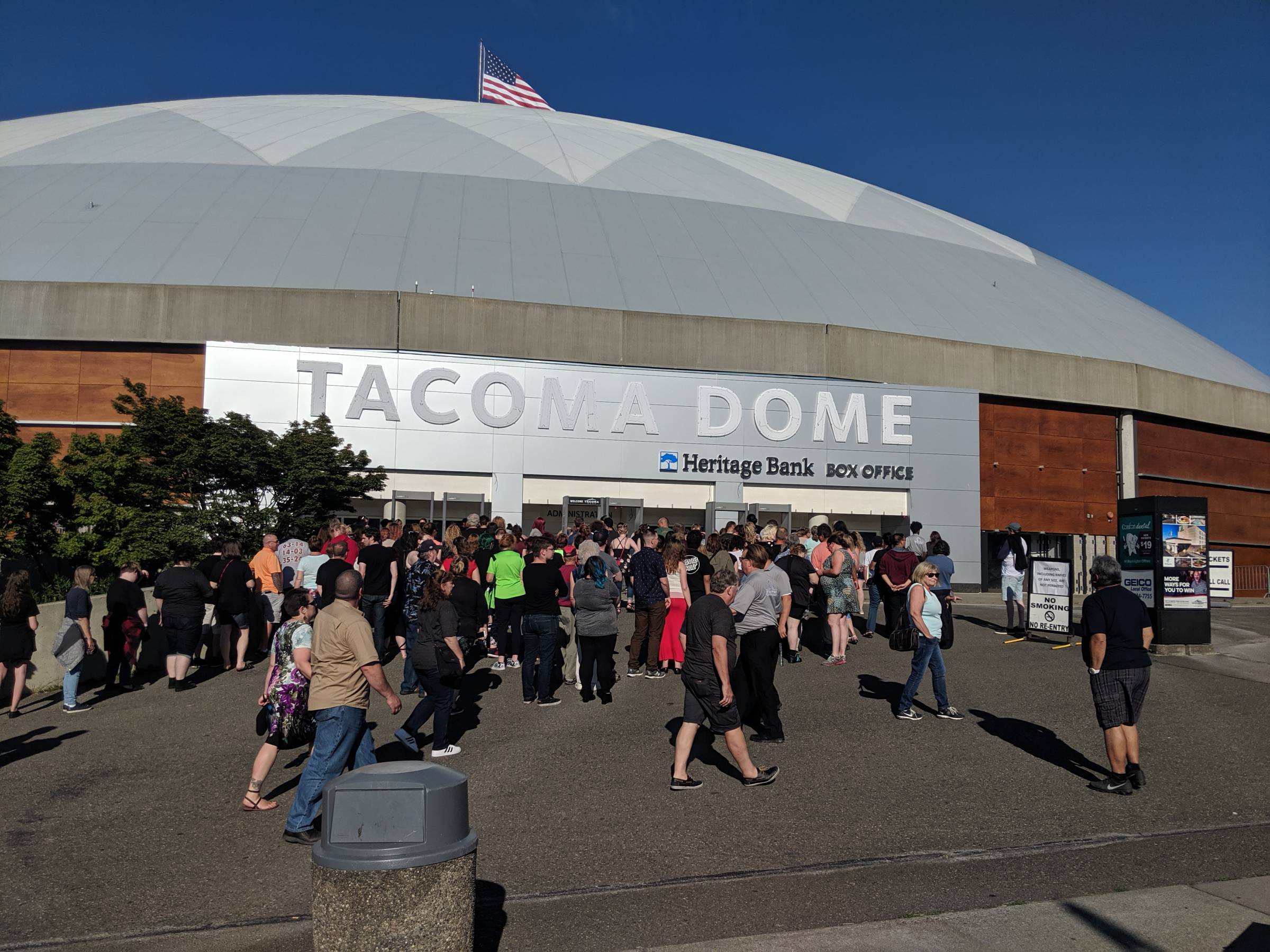


Stephen Antonakos model, Neon for the Tacoma Dome Distant scuffling could be heard as the choice moved to the arts panel for a decision. Roy Lichtenstein and Claes Oldenburg were among the invitees that chose not to proceed but Andy Warhol, Richard Haas, George Segal and Stephen Antonakos delivered fully developed designs and models by March of 1982 and they were displayed around town. Three of the four designs used the massive dome roof as a canvas while only Segal went for an interior sculpture of trapeze artists hanging above the entrance. Warhol covered the dome in a giant brightly colored flower, Haas went for a painted night sky with hundreds of tiny lights for stars and Antonakos went neon large with a completely royal blue roof laced with glowing pink neon tubes that wormed inside the roof in 600 places.
TACOMA DOME CONCERTS DECEMBER 2017 FULL
It may not have been a promising start and was certainly not the best way to engage the locals.Īfter due deliberation and a recommendation that the artwork be outside, the three person panel invited six artists from more than 50 submissions to prepare full design proposals. The bitterest fighting in Tacoma’s neon wars started in February 1984 when the City Council finalized the decision to spend a quarter of a million dollars from the construction of the Tacoma Dome on a watered down version of Stephen Antonakos’s artwork “Neons for the Tacoma Dome”. Almost two years prior, Tacoma’s approach to selecting the dome artwork was to hire a jury with major art world credentials (including Post Modern architect Michael Graves who had just completed the radical and controversial Portland City Hall Building). And then in early 1980’s, just as the issue was residing and civic pride and unity seemed to be rebuilding around the dazzling new Tacoma Dome, an announcement was made about a major high priced, high brow artwork for the Tacoma Dome… It became an expensive and irritating tension between City Hall and the small merchants and business districts south and west of the downtown. Federal Model Cities program design standards and local ordinances that discouraged or outlawed business signage over public sidewalks and right of ways were forcing merchants and small business people to remove classic neon box signs. “Tacoma has a history of getting into relatively bitter fights over matters of passing concern.”īy the end of the 1970’s, most of the commercial neon signage in Tacoma was vanishing.


 0 kommentar(er)
0 kommentar(er)
